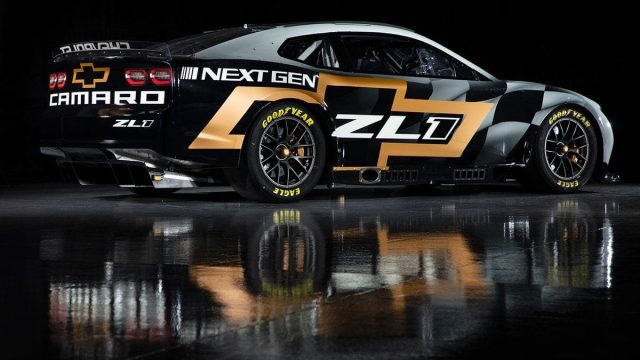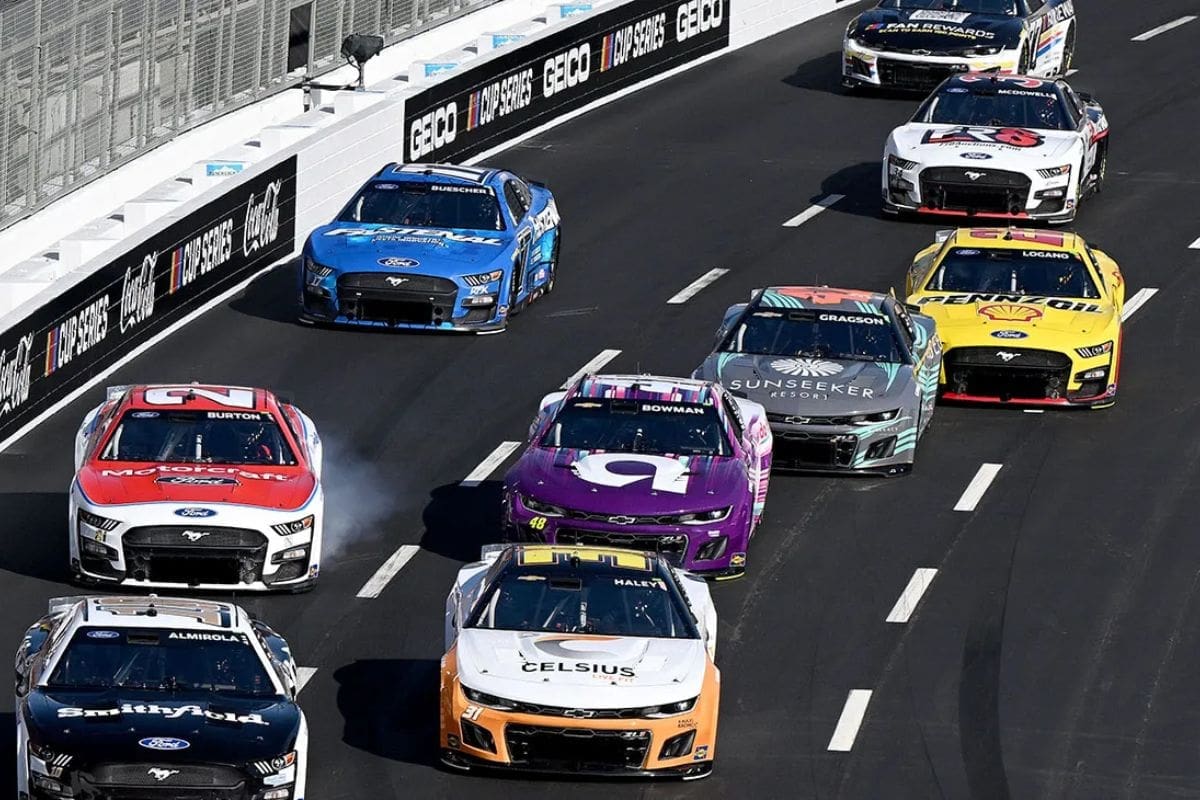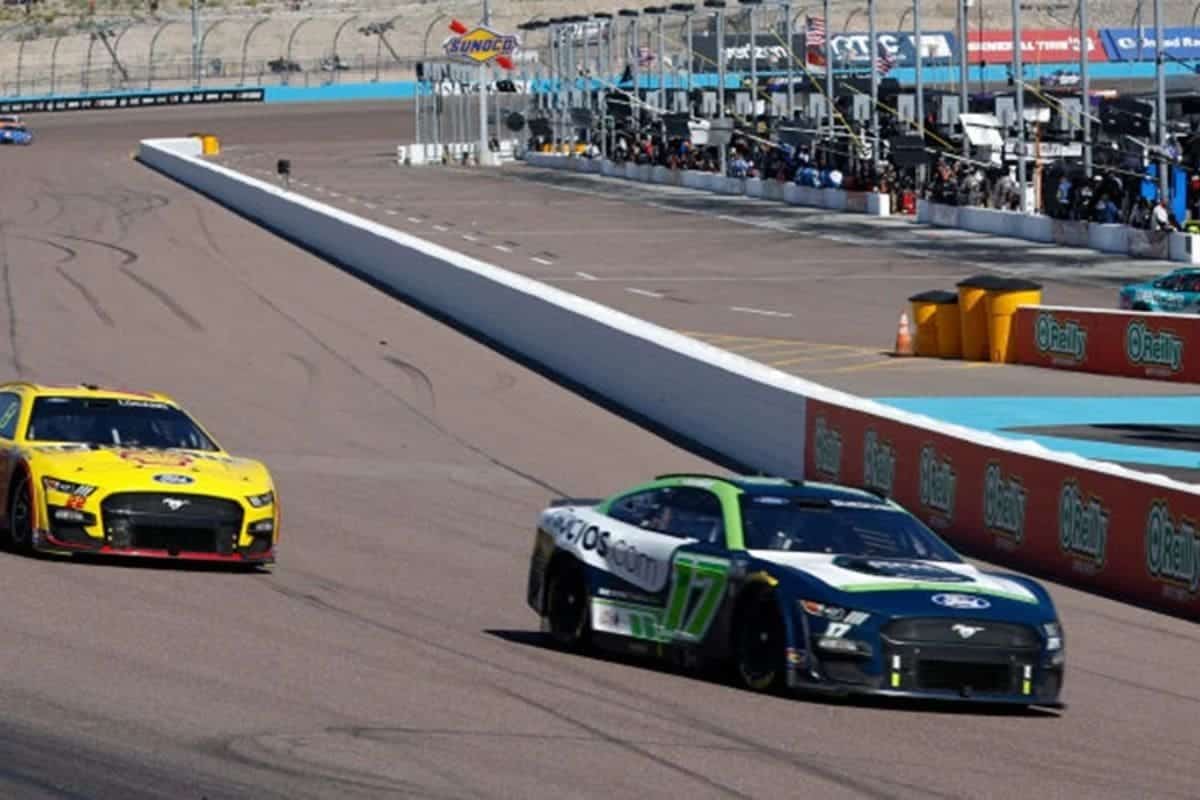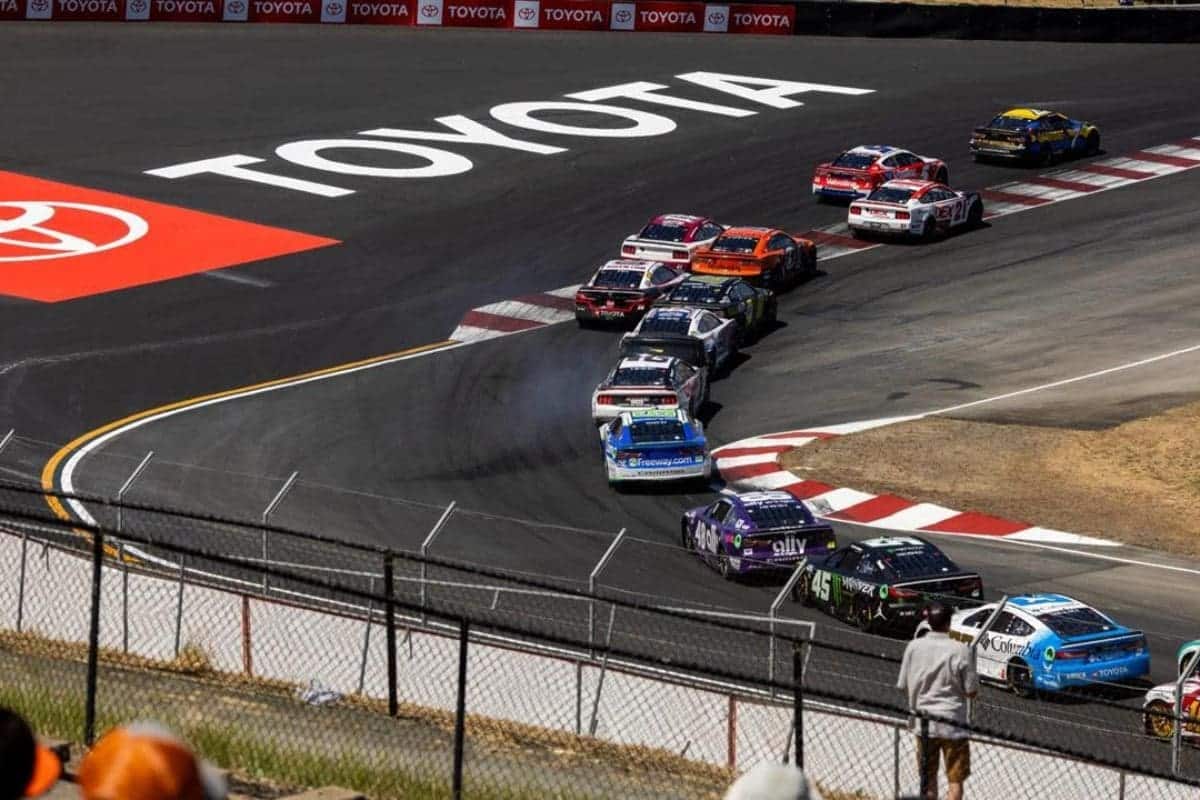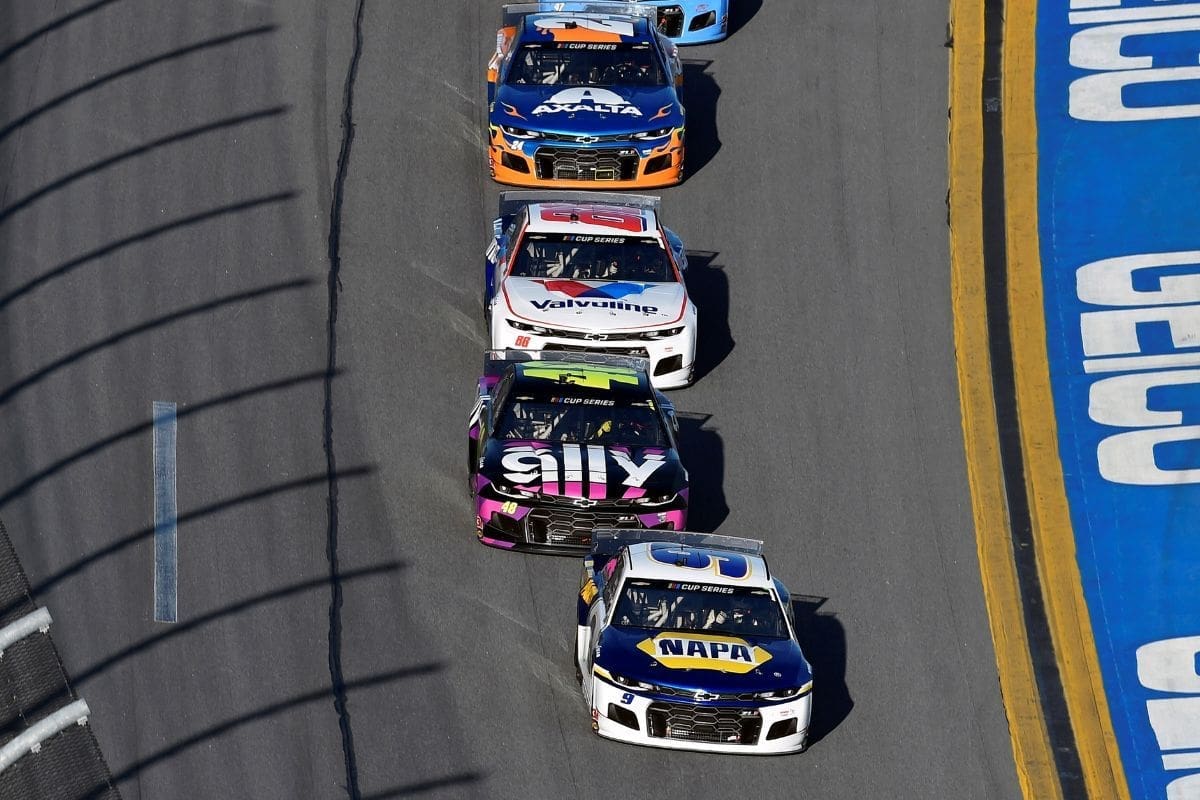Revolution on Wheels: In a bold move that reshaped the landscape of NASCAR, the introduction of the Next Gen cars in 2022 marked a significant pivot for the sport. Long overdue for an upgrade from the Gen 6 models that had defined racing since 2013, the Next Gen cars promised more than just technological advancements. They represented a new era of innovation aimed at enhancing competition, safety, and overall fan experience. Developed collaboratively with input from drivers, teams, and manufacturers, these cars brought cutting-edge features like a redesigned chassis, sequential gearbox, and composite body panels.
Introduction to Next Gen Cars in NASCAR
In 2022, NASCAR embarked on a bold new era with the introduction of the Next Gen cars, a move that signaled a monumental shift from the longstanding Gen 6 models that had defined the sport since 2013. This transition wasn’t just about updating the look of the cars; it represented a profound evolution in racing technology aimed at revolutionizing competition on the track. Developed through extensive collaboration among NASCAR, drivers, teams, and manufacturers, the Next Gen cars heralded a host of innovations designed to enhance every facet of racing.
At the heart of these innovations is a completely redesigned chassis, engineered to deliver enhanced speed and agility while maintaining robust safety standards. The introduction of a sequential gearbox marked a departure from traditional transmission systems, offering drivers more precise control and responsiveness during races. Meanwhile, the adoption of independent rear suspension aimed to improve handling and stability, crucial factors in navigating NASCAR’s diverse array of tracks. Complementing these changes were lightweight composite body panels, not only enhancing aerodynamics but also reducing costs associated with repairs and maintenance—a significant boon for teams navigating the financial complexities of professional racing.
Beyond their technical advancements, the Next Gen cars were envisioned as a means to level the playing field among NASCAR’s teams. By standardizing key components and refining aerodynamic profiles, the cars aimed to reduce the advantages gained through extensive financial resources, fostering closer competition and unpredictable outcomes on race day. This shift promised to amplify the thrill of NASCAR for fans, who anticipated more wheel-to-wheel action and strategic maneuvers as drivers adapted to the new vehicles.
The rollout of the Next Gen cars wasn’t without its challenges. Initial testing and early races revealed teething issues, from mechanical gremlins to adjustments in race strategies required to optimize performance under the new ruleset. Drivers and teams faced a learning curve as they familiarized themselves with the intricacies of the Next Gen technology, grappling with changes that impacted everything from pit stops to on-track tactics. These early hurdles underscored the complexity of integrating cutting-edge innovations into the highly competitive world of NASCAR, where milliseconds and split-second decisions can determine victory or defeat.
Impact on Average Finishes
Denny Hamlin’s insights into the impact of Next Gen cars on average finishes provide a candid view into the challenges faced by NASCAR drivers during the transition from Gen 6 models. As a seasoned driver with Joe Gibbs Racing, Hamlin’s experience and perspective carry weight within the racing community. His discussion on the Actions Detrimental podcast shed light on how these new vehicles initially disrupted the established norms of average finishing positions in NASCAR.
One of the primary issues Hamlin highlighted was the inconsistency in grip levels, a critical factor that directly influences how well a car handles various track conditions. With the introduction of Next Gen cars, drivers found themselves navigating unfamiliar territory as they grappled with varying grip characteristics from track to track. This variability posed a significant challenge, requiring drivers to adapt their driving styles and setups continuously to extract optimal performance.
“The Next Gen car really, it took everyone’s average finish the first two years and it moved it up three to four points. So when we were finishing the Gen 6 car, I think that we were averaging like a seven or eight something like that.” – Hamlin
Power steering failures emerged as another prominent concern cited by Hamlin. The reliability of power steering systems became a focal point of frustration, as any failure during a race could severely impact a driver’s ability to control their car effectively. Such technical glitches not only affected individual race outcomes but also contributed to the overall increase in average finishing times observed early in the Next Gen era.
“Then with all the unknowns and Next Gen [cars] you’re going to have weeks where you hit it weeks that you don’t. We had mechanical failures all through the first year of the Next Gen. Remember all the power steering issues and all that stuff? Everyone’s average finish went up like it just was because it just wasn’t as easy to finish up front every single week.” – Hamlin
The culmination of these challenges resulted in a notable rise in average finishing times across NASCAR races. Drivers accustomed to the stability and predictability of the Gen 6 era suddenly faced a more volatile competitive landscape with the introduction of new technologies. The adjustment period was marked by a steep learning curve, where teams and drivers had to quickly understand and adapt to the nuances of the Next Gen cars to remain competitive.

Hamlin’s candid discussion highlights the resilience required of drivers and teams during this transitional phase. It wasn’t just about mastering the mechanical aspects of the new cars but also about refining race strategies to mitigate the impact of technical uncertainties. The ability to swiftly learn from setbacks and implement improvements became essential in navigating the complexities of racing with Next Gen technology.
Stabilization and Performance Improvement
The journey towards stabilization and performance improvement with NASCAR’s Next Gen cars has been a testament to the resilience and adaptability of teams across the sport. Despite early challenges, including technical glitches and unfamiliar handling characteristics, teams have shown a remarkable commitment to understanding and optimizing these new vehicles. This dedication underscores NASCAR’s push for innovation and competitiveness, aiming to enhance both the on-track action and the overall fan experience.
Key to this process has been the intensive focus on comprehending the intricate specifications of the Next Gen cars. Teams have invested significant resources into dissecting every aspect of the new chassis design, sequential gearbox, independent rear suspension, and composite body panels. This deep dive into the mechanics of the cars has not only informed adjustments to race setups but also paved the way for strategic advancements in pit strategies and performance optimization.
Pit road, often referred to as the heart of NASCAR strategy, has seen a resurgence in tactical refinement. Teams are leveraging their newfound knowledge of the Next Gen cars to execute pit stops with greater precision and efficiency. From tire changes to fuel management, each aspect of pit road operations has been fine-tuned to minimize downtime and maximize race track position, thereby influencing overall race outcomes more profoundly than ever before.
Moreover, the quest for enhanced car reliability has been paramount. Addressing early concerns such as power steering failures and other technical hiccups, teams have implemented robust measures to improve the durability and resilience of their Next Gen machines. Advances in reliability not only bolster driver confidence but also contribute to the gradual reduction in average finishing times across races, narrowing the gap compared to the Gen 6 era standards.
As teams continue to refine their understanding of the Next Gen cars’ capabilities, optimism within the NASCAR community is palpable. The ongoing adjustments and strategic refinements are not just about catching up to previous norms but about surpassing them. Drivers and crew chiefs alike are embracing the challenge of mastering these sophisticated vehicles, confident that their efforts will lead to tighter competition and more thrilling race finishes.
Current Trends and Optimism
Recent seasons in NASCAR have showcased the transformative impact of the Next Gen cars, with drivers like Denny Hamlin emerging as pivotal figures in adapting to and thriving with these new technologies. Since their debut in 2022, the Next Gen cars have been a focal point of discussion, representing a significant departure from the long-standing Gen 6 models. Denny Hamlin’s performances stand out as a prime example of the adaptability required to succeed in this new era of racing. With nine victories under his belt since the introduction of the Next Gen cars, including several standout wins in the current Cup Series season, Hamlin has proven his ability to not only adjust but excel with these innovative vehicles.
Hamlin’s success isn’t just about race wins; it’s about navigating the nuanced challenges presented by the Next Gen cars. These vehicles brought with them new technical demands and operational intricacies, challenging drivers and teams to rethink their strategies and approaches. For Hamlin, each victory underscores not only his driving prowess but also the collective effort of his team to master the intricacies of the Next Gen platform. From managing tire wear on the new composite body panels to optimizing pit stop strategies with the sequential gearbox, every aspect of racing with these cars demands precision and adaptation.
“That number [drivers’ average finish] is starting to creep its way back down to where it was in in the Gen 6 era because people are starting to figure out how to optimize the car. They’re not making as many mistakes on pit road anymore and the reliability of the car is getting back to what we had with the Gen 6.” – Hamlin
Beyond Hamlin’s individual achievements, the broader NASCAR landscape reflects a growing optimism fueled by ongoing advancements and adjustments. Teams across the board are leveraging race data and insights to fine-tune their setups, refine their strategies, and enhance the overall performance of their Next Gen cars. This iterative process is crucial in narrowing the performance gap that initially widened with the introduction of these new vehicles. As teams gain more experience and understanding of the Next Gen cars, the competition is expected to intensify, promising closer races and more thrilling finishes for fans.
The evolution of NASCAR with the Next Gen cars isn’t just about technical advancements; it’s about setting new benchmarks for competitiveness and entertainment. Each race serves as a proving ground where teams experiment with setups, strategies, and tactics to maximize their performance under the new regulations. Hamlin’s consistent presence at the front of the pack not only reflects his skill as a driver but also serves as a barometer of the sport’s progress with these cutting-edge vehicles.
Conclusion and Future Outlook
Looking ahead to the future of NASCAR with the Next Gen cars, Denny Hamlin’s optimism serves as a beacon for the sport’s potential. His belief in the ongoing innovation and refinement by teams underscores a collective commitment to returning to competitive norms akin to the Gen 6 era. The transition to the Next Gen cars marked more than just a technological shift; it signaled NASCAR’s steadfast dedication to enhancing both the sport’s competitiveness and fan engagement.
As teams continue to unlock the full potential of the Next Gen cars, they are not just adapting but thriving in this new era of racing. The initial challenges of mastering these advanced technologies have given way to breakthroughs in understanding and application. From refining pit strategies to optimizing car setups, each race becomes a crucible where teams push the boundaries of performance.
The ongoing evolution of the Next Gen cars represents a pivotal milestone in NASCAR’s journey toward technological advancement and competitive excellence. With advancements in chassis design, gearbox technology, and aerodynamics, these cars have set new benchmarks for speed and reliability. Drivers like Denny Hamlin, with his nine victories since 2022, exemplify the adaptability required to excel in this high-stakes environment.
Looking forward, NASCAR fans can anticipate thrilling races and close competition as teams continue to harness the capabilities of the Next Gen cars. Each lap becomes a testament to innovation, strategy, and skill, promising unforgettable moments on the track. As the season progresses, the momentum built by drivers and teams alike will fuel excitement and anticipation, ensuring that NASCAR’s legacy of innovation and excitement continues to shine brightly.
News in Brief: Revolution on Wheels
Looking ahead, the future of NASCAR with the Next Gen cars shines brightly with promise and potential. As drivers and teams continue to adapt and refine their strategies, the sport is poised for a resurgence in competitiveness reminiscent of its golden eras.
The ongoing evolution of these cars signifies not just a technological leap forward, but a reaffirmation of NASCAR’s commitment to thrilling racing and fan engagement. With each race, the Next Gen cars are proving their worth on the track, pushing boundaries and delivering unforgettable moments. As the season progresses and these cars continue to evolve, one thing is clear: the best is yet to come for NASCAR and its passionate fanbase.
Our Reader’s Queries
Q. What changes did NASCAR make to next gen car?
A. The Next Gen car incorporates several key aerodynamic features aimed at minimizing side force. These include a stepped front splitter, aerodynamic vents on the hood, and a redesigned side skirt. Notably, NASCAR introduces a rear diffuser for the first time with the Next Gen, marking a significant evolution in car design for the sport.
ALSO READ: NASCAR’s Evolution From Stock Cars to Next Gen and The Path Forward
